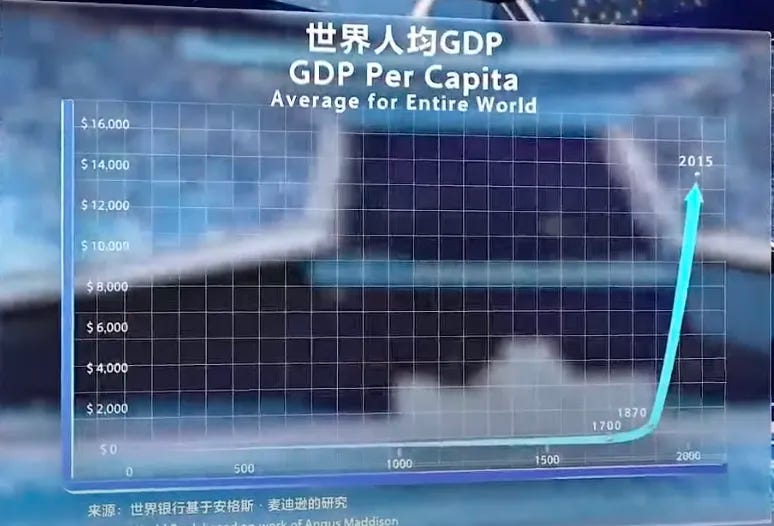The two contributors to this post are Zichen Wang and Fei Yu . Zichen Wang is the Deputy Director & Research Fellow at the Centre for China and Globalization. Fei Yu is a PhD student at Lancaster University.
The tech entrepreneur predicts smart solutions will eliminate the need for purchase and traffic restrictions in China by 2027, and traffic jam could be basically gone by 2032.
Baidu, once the “B” in China’s so-called BAT Internet titans (A=Alibaba and T=Tencent), has for some years been considered as increasingly lagging behind its larger rivals in arenas such as video, gaming, and social media.
The dominant search engine in China, where Google isn’t available, has doubled down on artificial intelligence with notable progress. In August 2022, two big cities gaveBaidu approval to operate ride-hailing services without a driver or a person overseeing safety in the vehicle. At the end of the year, Baid and Toyota Motor Corp-backed startup pony. ai were granted the first licenses to test fully autonomous vehicles without safety operators as a backup in the Chinese capital of Beijing.
More recently, curiously, Reuters and Bloomberg cited an anonymous source, respectively, as saying Baidu would launch a ChatGPT-style bot in March. It’s unknown if it’s the same talkative person who leaked the same thing to the Wall Street Journal.
Anyways, Baidu is known to have bet heavily on artificial intelligence. Robin Li, its Co-founder, Chairman, and CEO, recently elaborated on Baidu’s thinking in the 2022 Baidu Create (Baidu’s AI Developer Conference). Below is an abridged translation of his speech, entitled 创新驱动增长,反馈驱动创新 Innovation drives growth, feedback drives innovation.
[Disclosure: This is NOT sponsor content. Fei Yu, a contributor to Pekingnology and Ph.D. student at Lancaster University studying mobility, wanted to run something related to mobility.]
Over the past year, there have been fewer discussions about windfall and more focus on growth health. Today, my talk will center around the topic of growth. Where does growth come from? What drives sustainable growth?

The world’s average GDP per capita over the past 2000 years is shown in the graph. As you can see, there was not much change in the average GDP per capita in the early 1800s. However, there has been significant growth in the past 250 years. This explosive growth was due to several technological revolutions in human history. Technology innovation drives significant growth.
In my opinion, deep learning algorithms would be the hallmark of the fourth technological revolution. The efficiency gains brought about by this technology, and the economic growth it drives are greater than many people imagine. Major innovations in deep learning include self-driving vehicles and intelligent scheduling systems in fields such as hydropower. These innovations have significant social impacts, similar to the impact of inventions like automobiles and the internet.
So, it is technology innovation that drives significant growth. But where does innovation come from?
The concept can be summarized as “feedback-driven innovation.” Scientists conducted a thought experiment. If a blind person is given a scrambled Rubik’s cube and asked to restore it at a rate of one rotation per second, how long will it take for the person to restore the cube? The answer is 137 billion years. But if someone gives feedback to the blind person after each rotation, indicating whether they are getting closer to or farther away from the goal, how long will it take to restore the cube? The answer is just 2 and a half minutes! This demonstrates the power of feedback.
Innovation cannot be a closed-door activity. Innovation requires market entry and continuous feedback from users and customers. It can only be achieved through “feedback”.
Baidu has many examples of “feedback-driven innovation” in its business development. For example, Baidu’s Kunlun Chip, which has leading performance in AI chips, was optimized for Baidu’s search services for ten years. Baidu’s search services respond to billions of real user demands daily, providing the most accurate and timely feedback, and driving optimization of large models, deep learning frameworks, and chips. This is a classic case of real large-scale feedback driving innovation.
Another example is Baidu’s release of the number of orders for its Apollo Go every quarter since last year. The goal is to maintain the leading global position in orders for autonomous driving services. This is also the philosophy of “feedback-driven innovation”. The largest number of orders means the most market and user feedback.
The actual development path of things is often different from the original idea. Technology development does not have a roadmap, only a compass. By iterating based on feedback from practice, valuable innovation can be achieved with the direction roughly correct.
Baidu is one of the few global AI companies that implement full-stack deployment. The company’s work can be divided into four layers: chip layer, framework layer, model layer, and application layer. From the high-end chip Kunlun to the deep learning framework PaddlePaddle to the pre-trained large model WENXIN, there are key self-developed technologies at each level, with feedback between each level. By continuously receiving feedback, end-to-end optimization is achieved.
The technology architecture becomes more general as it moves down and more specialized as it moves up. This means the threshold for industry use of technology is continuously lowered while the application is deepened in the industry.
Specifically, there are two aspects to consider in developing artificial intelligence. On the one hand, the general applicability of AI technology is improving, and the barriers to development and application are lowering. On the other hand, AI is penetrating industries and driving the growth of the real economy.
Intelligent transportation, called by me an “intelligent dispatch system,” can enhance traffic efficiency by controlling the flow through smart traffic lights. This can increase traffic efficiency by 15% to 30%. Baidu’s solution has been implemented in 63 cities and officially recognized by the Ministry of Transport. The Ministry has listed Baidu as a pilot in building a strong transportation nation.
It is predicted that intelligent transportation will eliminate the need for traffic restrictions in first-tier cities in China before 2027, thereby boosting automobile consumption and revitalizing the city’s economy post-pandemic. Before 2032, the problem of traffic congestion can largely be solved by improving traffic efficiency.
The application of intelligent transportation creates new opportunities in energy, electricity, water supply, and other fields by utilizing the “intelligent dispatch system” to achieve significant efficiency gains. This presents a great opportunity for developers and creators.
As the barriers to technology application continue to decrease, creators will enter a golden era of AI. While the direction of development is clear, the implementation process is challenging and there will be obstacles. However, these challenges drive innovation and innovation is the true driver of growth.
In recent years, there has been a directional change in AI, both in technology and business applications. On the technological level, AI has shifted from content understanding to content generation, including AI-generated content for various forms of creation, such as paintings, texts, graphics, videos, etc.
In terms of commercial applications, self-driving is the most significant change. Previously, it was thought that technology would progress from L2 to L5 incrementally. However, L4 technology may enter commercial use before L3, as liability for accidents in L2 and L4 is clear, but liability in L3 is uncertain. Baidu’s L4 self-driving has quickly gained traction with over 1.4 million orders as of September 2023. It operates in multiple cities, including Beijing and Shanghai, and has opened fully unmanned operations in Chongqing and Wuhan.
However, the challenges are significant. Many areas of the real economy have not yet undergone digital transformation, and digitalization has not yet brought about significant efficiency improvements. The widespread implementation of AI will take time, and its impact on the real economy is not yet widely accepted. The commercialization of AI still requires exploration in the unknown.
Difficulties stimulate innovation, and innovation is the driving force of growth. The keywords “crisis and hope” can be used to summarize this.
However, we must acknowledge that the challenges are substantial. In reality, the digital transformation in many aspects of the real economy has not yet been fully realized, and digitalization has not resulted in a substantial increase in efficiency. The widespread adoption of artificial intelligence still takes time, and its potential impact on the real economy is yet to be widely acknowledged. Thus, the commercialization of AI still has some uncertainty ahead of it.
I used “crisis and hope” as keywords and an AI generated this painting on the Baidu AI drawing platform. I find it very vivid. A new, lively life has broken through the ice, but the cold has not yet fully receded. All great enterprises and creators face the same challenges, with no smooth sailing but only persistent difficulties and triumphs. Difficulties drive innovation, and innovation is the real driving force behind growth.





